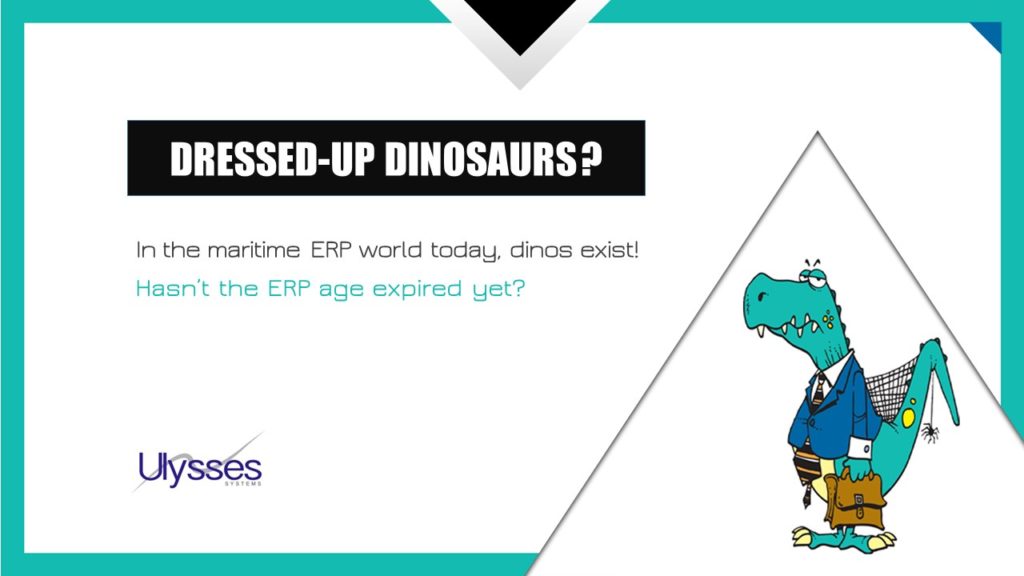
In the maritime ERP world today, dinosaurs exist!
ERP solutions, which originated in the 80’s and 90’s, were developed to simplify the book-keeping process and improve its accuracy. The goal was straight forward: let’s record “how much we spend”.
Discovering “Why we spend” was then unsuccessfully attempted through reports that broke costs down into cost centres and SFI codes.
Surprisingly, even the most recent maritime ERP solutions have taken this book-keeping centric design, hoping that “latest fashion” in technologies might bring them up to date, rather like dinosaurs dressing-up… because in the maritime ERP world today, dinosaurs are dressing up in the latest fashion!
Ulysses Systems CMMS design started from Maintenance with Purchasing and Accounting as supporting functions, not vice versa, because expenses recorded in Accounting systems and incurred through Purchasing systems depend on technical concerns. Unless the technical concerns are addressed, we cannot evaluate the expenses.
The type of concerns current in the industry and needing answers being:
- Why do we need this expensive spare part so often?
- How can this specific pump run so many hours without maintenance on one vessel and not on another?
- How much will we be spending on our assets in the future?
The why and the how must accompany the purchase and the expense that we register in accounting.
The result of focusing primarily on accounting breaks down our industry, and especially the technical part, into broad categories that can only serve for comparing a coarsely grouped set of expenses from year to year.
The drawback is that these broad categories do not tell us why we incur expenses or how to mitigate them. They don’t even help attract attention to problem areas, since technical problems are solved at the root, which is technical, and not via aggregated expense groups unrelated to what caused them.
Technical questions were built into the Task Assistant ® architecture, which is why today the TA is a benchmark for maintenance systems in the maritime industry.
The conversation today shifts towards high-ROI features and real value creations. We believe that a gradual and consistent transition towards a business-centred direction is valuable for the entire marine industry.
